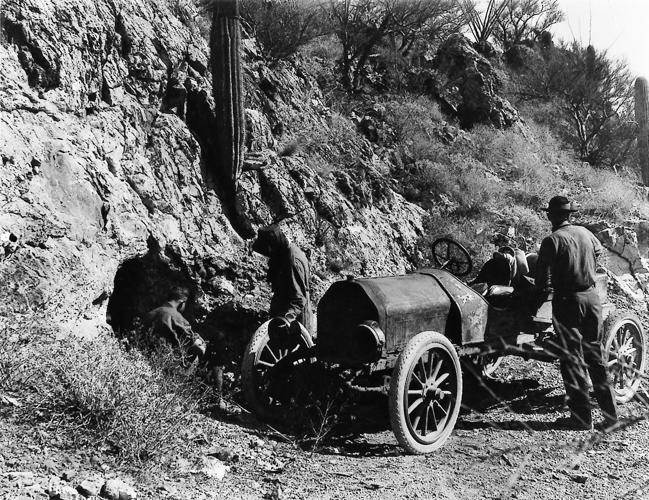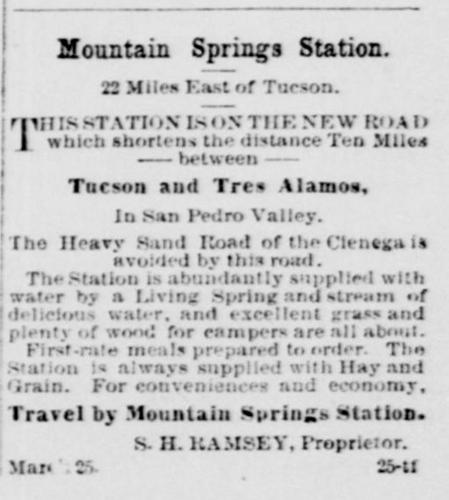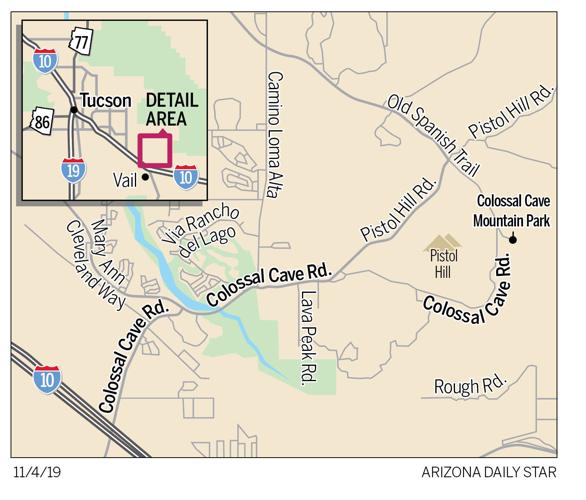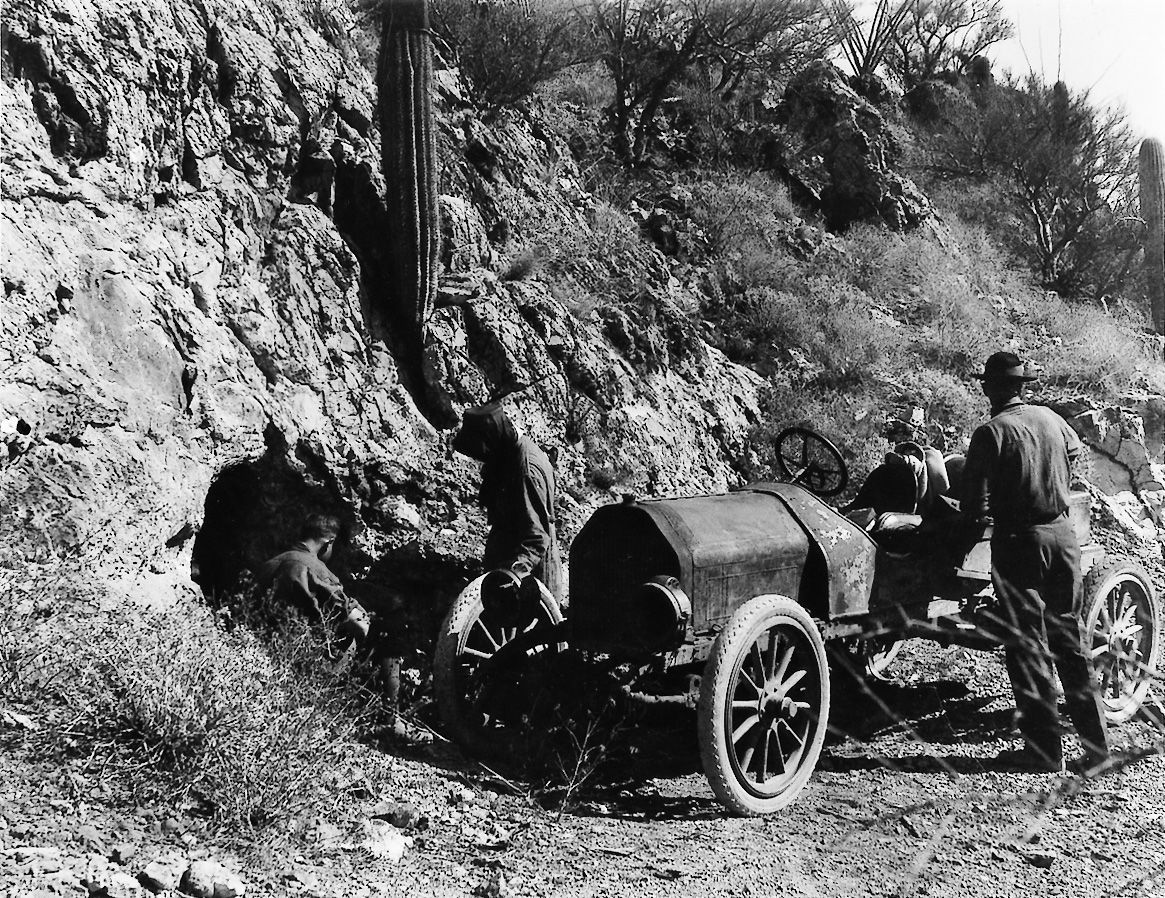By the mid-1870s, a man named Sidney H. Ramsey had left his native Farmerville, Louisiana, moved out to the Arizona Territory to put in a couple of years in Prescott as a teamster and then relocated to the Tucson area.
In 1876, not yet 30 years old, Ramsey was the proprietor of the Mountain Springs Station, a stage stop about 22 miles east of Tucson, at the foothills of the Rincon Mountains.
An ad, published in March of that year in the Arizona Citizen newspaper, said, “This station is on the new road which shortens the distance ten miles between Tucson and Tres Alamos, (a farming community) in the San Pedro Valley.”
It further explained, “The Station is abundantly supplied with water by a living spring and stream of delicious water and excellent grass and plenty of wood for campers are all about. First-rate meals prepared to order. The station is always supplied with hay and grain.”

By September 1876, however, Ramsey was no longer connected to the Mountain Springs Station. He found himself at San Carlos, Arizona Territory, drinking whiskey with a cattle herder named Brady. After excessive drinking and a dispute, Brady gunned down Ramsey.
By 1878, E.H. “Hank” Bridwell had obtained ownership of the Mountain Springs Ranch, which would include the Mountain Springs Hotel and the already existing Mountain Springs Station.
A visitor to his ranch that year described the place: “Mr. Bridwell has a valuable property in the Mountain Springs Ranch, which is bound to speak for itself before any great lapse of time passes by. The valley of ravine above sparkles with an abundance of running water, which can be so utilized as to be of great value to the land about the ranch. The house is not sufficiently large to accommodate the guests who travel on the road and Mr. Bridwell is now making adobes on the premises for the purpose of putting up an addition, or rather the new structure will be the main building, which will afford ample accommodations for the traveling public.”
The next year saw new operators, with a short lived partnership of Solomon Lick and Samuel Lee at the Mountain Springs Ranch. Lick was born on a farm in Illinois around 1845 and served in Company A of the 63rd Illinois Infantry during the Civil War. Lee’s past is unknown but he might have been a Chinese immigrant. The partners promoted the Mountain Springs Hotel as “The finest summer resort for families and winter resort for hunters and sportsmen in southern Arizona. ... Mineral springs are nearby and special accommodations are provided for families, there being six excellent rooms, well furnished.” The ranch’s dairy supplied fresh butter, milk, eggs and poultry for the dinner table while the ranch provided stable accommodations for guest horses.

Boy Scouts and family prepare to explore Colossal Cave in 1917.
A little before Jan. 15, 1879, Lick came across an interesting find approximately half a mile from his ranch, which would be explained in the newspaper: “Mr. S. Lick, of Mountain Springs Station, with some other parties, has made a discovery of either a very old extensive mine or a wonderful cave. This curiosity has a fine, arched opening apparently cut out. About forty feet from the entrance there is a large room about seventy-five feet square, from which several halls or tunnels branch out. Some of these have been explored two and three hundred feet. They explored it for about five hundred feet from the entrance. He thinks it is an old mine. Further explorations will soon be made.”
Less than two weeks later an exploration party carrying candles placed in a small board visited the cave or “Arizona Catacombs” and reported what they found: “An arched entrance three feet wide and four feet high ... At the mouth of the cave the air was terribly foul ... discovered to be from the large deposits of bat excrement all through the cave ... The finding of ashes and other indications of fire, evidently very old ... (and) no doubt one of the haunts and resting places of the Apaches ... Bones of all kinds lay scattered around, no less than 500 deer antlers being seen and other evidences of life destruction and feasting... For five hours they penetrated and searched into the dark recesses of these wonderful passages, chambers and complex catacombs, only to arrive at the conclusion that to explore the great natural wonder before them would take them days and perhaps months. They brought out with them many beautiful specimens of stalactites and some fine deer antlers which they brought with them to the city.”
In April 1879, Lick purchased the Mountain Springs Ranch from Lizzie M. Smith for all his cattle, one wagon, two horses, a double set of harnesses, four cows, two pigs and 25 chickens. It is believed that prior to this he had been leasing the property.
During that year, the Tucson & Tombstone Stage Lines ran stagecoaches through the Mountain Springs Ranch and the National Mail & Transportation Co. carrying mail and freight from St. Louis, Missouri, utilized the station as well.
In 1884, the Arizona Daily Star reported, “The Mountain Springs Cave ... is as yet unexplored. Half a mile is said to be the greatest distance its mysterious depths have been penetrated.”

Mountain Springs Station ad, Arizona Citizen, June 24, 1876
The ranch sometimes attracted unsavory characters. As local historian Sharon E. Hunt wrote, “The area attracted thieves, as Mountain Springs Ranch and two nearby caves played a part in two train robberies in 1887. On April 27, three men robbed the mail train of Southern Pacific Express Train Number 20 near Vail and escaped with $3,000 in currency. Before the robbery, they had spent several days camped out at Mountain Springs Ranch. Two of these outlaws robbed the train again on August 10 between Vail (Station) and Pantano (Station), making off with a considerable amount of gold and Mexican silver dollars. While searching for the bandits, the tracking parties used Mountain Springs Ranch as their headquarters and came across two caves, one of which was ‘Five Mile Cave,’ (aka Mountain Springs Cave). Both caves were thought to have been used by the outlaws, based on evidence left in them, including canteens, clothing, food and cooking pots.”
Around 1888, William Shaw and his wife took over the Mountain Springs Ranch and in time Shaw’s Ranch was used as an alternate name. Within a couple years he began plowing the land, planting trees and constructing new and substantial buildings on his property.
Two years later, Shaw, along with soldiers from Ft. Lowell, explored the Mountain Springs Cave. The men traveled for five hours using candles and magnesium wire to light their way through the interior of the underground chambers, viewing “every kind of lime cabinet specimens, finger-shaped and kidney-shaped stalactites and stalagmites, occurring in great quantities ... They also found a number of deer’s antlers, which were probably the remains of that animal after being devoured by a mountain lion ...They found holes in the cave so deep that the sound of a rock as it struck the bottom could scarcely be heard by them.”
In 1905, an enterprise was formed to mine the bat guano in the cave, with the company soon excavating a 75-foot tunnel for access to the valuable excrement. Unconfirmed reports stated that seven carloads of guano were removed from the cavern and shipped to Los Angeles before the commodity was exhausted and operation stopped.

Mountain Springs Hotel ad, Arizona Daily Star, April 9, 1880
A local consortium operating in the 1910s proposed large scale development of the cave for tourism, and a plan for building a railroad spur from Vail to the cave was considered but the development wasn’t successful.
In December 1917, after Alfred A. Trippel and Jim Westfall had obtained claim to the cave and land around it for the possible purpose of turning it into a tourist attraction, Trippel asked Lynn Hodgson, a hobby spelunker, whom he had known from the Boy Scouts, to explore the cave.
Following the cave exploration, Trippel asked Hodgson to report his findings, to which he replied “the cave was colossal.” From this event Hodgson later stated the present name of “Colossal Cave” came into existence.
However, some sources state Byron Cummings of the University of Arizona, who explored the cave around the same time, gave it its name.

Candles and magnesium wire were once used to light the way through Colossal Cave.









